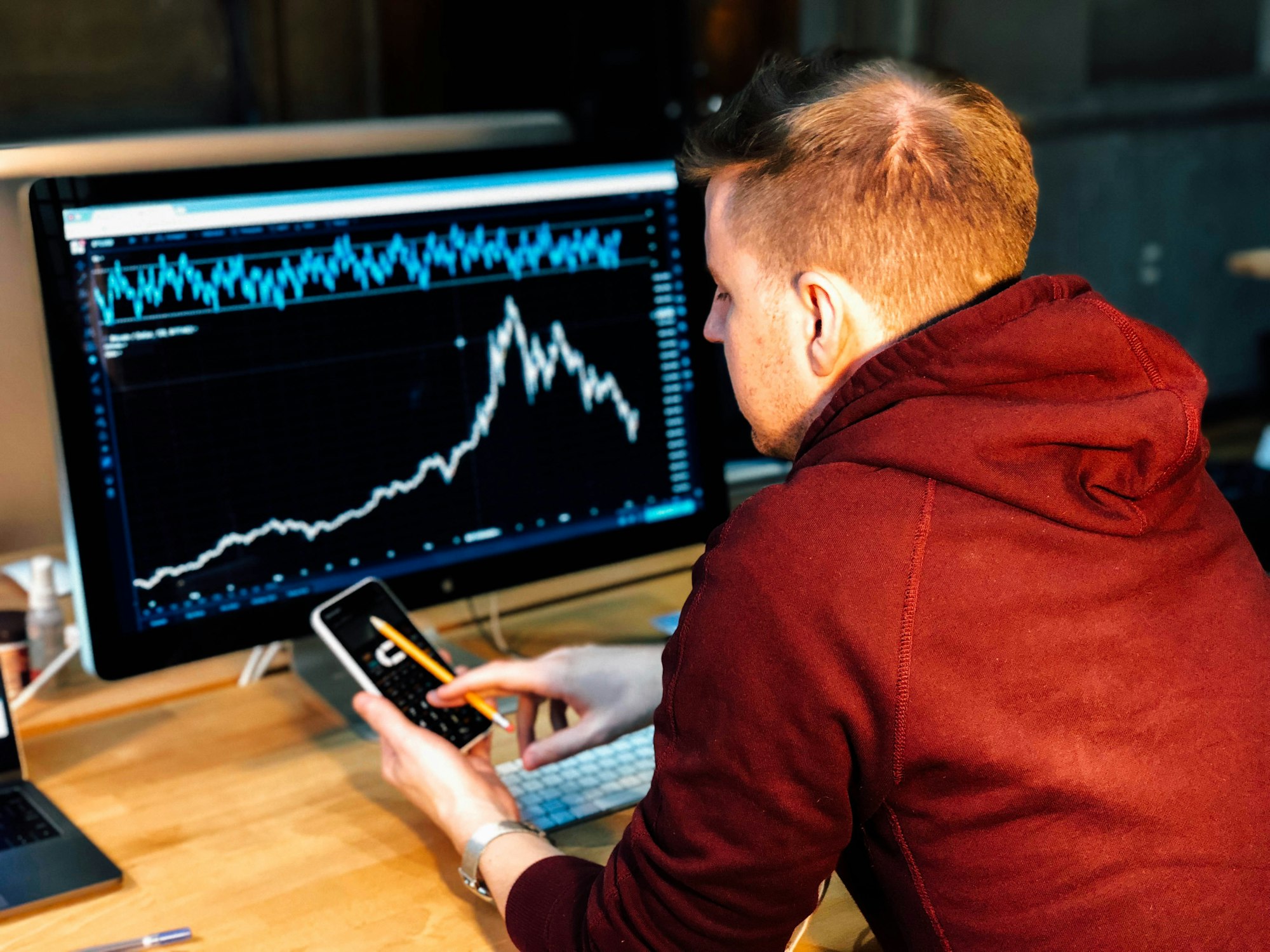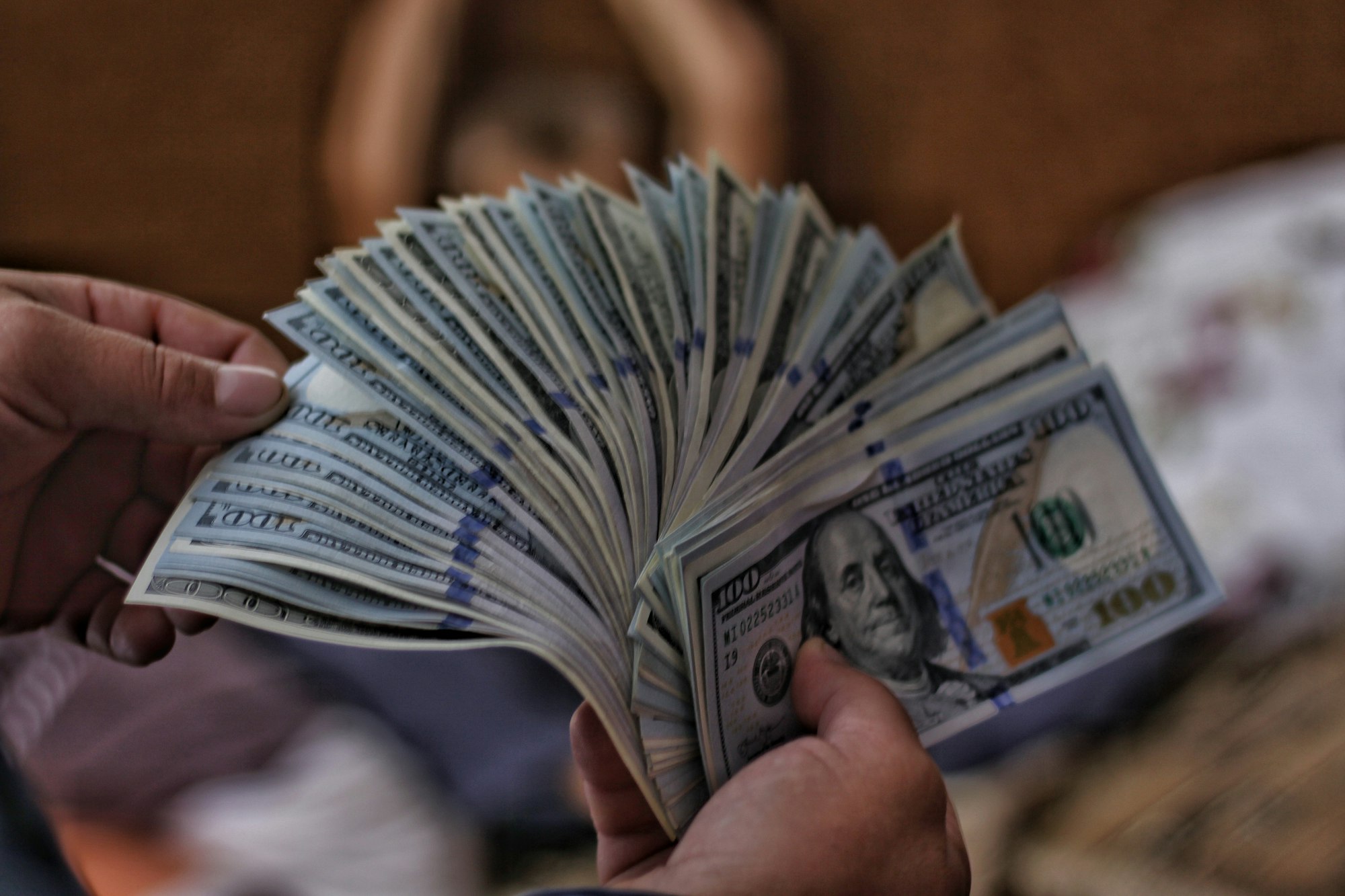Table of Contents
Masternodes have emerged as a popular investment opportunity within the cryptocurrency industry. As a unique type of node within certain blockchain networks, masternodes offer investors the chance to earn passive income by participating in the network’s operation.
While the process of investing in masternodes may seem intimidating to newcomers, it is a relatively simple process that can offer significant financial rewards. In this guide, we will explore what masternodes are, the benefits and risks of investing in them, how to choose a masternode to invest in, how to set up and run a masternode, strategies for maximizing returns, and tax considerations.
By the end of this guide, you should have a solid understanding of how to invest in masternodes and be well on your way to earning passive income in the exciting world of cryptocurrency.
Best Masternodes to Invest In:
In this section, you will find our choice of best masternodes to invest in:

What are Masternodes?
Masternodes are a unique type of node within certain blockchain networks that perform advanced functions beyond what regular nodes are capable of. In a masternode system, nodes with a certain minimum stake in the network (often referred to as collateral) are designated as masternodes, and they perform additional functions that help to improve the overall performance and security of the network.
Masternodes are typically used to facilitate advanced features such as InstantSend and PrivateSend, which provide faster and more private transactions, respectively. InstantSend enables near-instant transactions by locking inputs before they are spent, thereby preventing double-spending. PrivateSend provides an additional layer of privacy by mixing transactions together, making it more difficult for outside observers to track individual transactions.
Masternodes also help to secure the network by performing additional tasks such as validating transactions, participating in governance decisions, and voting on proposals. Because masternodes are required to hold a certain amount of stake in the network, they have a vested interest in maintaining its stability and security, which helps to ensure the long-term health of the network.
To become a masternode operator, one must typically hold a certain minimum amount of the network's cryptocurrency as collateral. The minimum required amount varies by network but is often in the thousands of coins. The collateral is not spent or at risk, but rather is held as a security deposit to ensure the operator's good behavior and investment in the network's success.
Overall, masternodes play an important role in certain blockchain networks by providing additional functionality and security beyond what regular nodes can offer. While the requirements for becoming a masternode operator can be substantial, the potential rewards can be significant, making it an attractive investment opportunity for those interested in cryptocurrency.
Benefits of Masternode Investments
Investing in masternodes can offer a range of benefits to investors, including the potential for passive income, enhanced network security, and opportunities for network governance participation.
One of the primary benefits of investing in masternodes is the opportunity to earn passive income. Masternode operators are typically rewarded with a portion of the block rewards generated by the network in exchange for providing additional services and resources to the network. This can provide a steady stream of income for investors, making masternodes an attractive investment opportunity for those seeking a more passive investment strategy.
In addition to the potential for passive income, investing in masternodes can also help to enhance the security and stability of the network. Because masternode operators are required to hold a certain amount of the network's cryptocurrency as collateral, they have a vested interest in maintaining the network's health and stability. This can help to deter malicious actors from attempting to attack the network, making masternode networks more secure overall.
Furthermore, masternode operators often have the opportunity to participate in network governance decisions and voting on proposals, giving them a say in the future direction of the network. This can be an attractive feature for investors who are interested in participating in the development of blockchain technology and shaping the future of cryptocurrency.
Overall, investing in masternodes can provide a range of benefits to investors, including the potential for passive income, enhanced network security, and opportunities for network governance participation. While there are risks and challenges associated with masternode investments, for those who are willing to put in the effort, the potential rewards can be significant

Risks & Challenges of Masternode Investments
While investing in masternodes can offer a range of potential benefits, there are also several risks and challenges that investors should be aware of before investing. Some of the key risks and challenges of masternode investments include:
- Volatility: As with all cryptocurrencies, the value of the underlying cryptocurrency used as collateral for masternodes can be highly volatile. This means that investors may experience significant fluctuations in the value of their investment, which can be particularly challenging for those who are relying on masternodes for passive income.
- Technical Challenges: Setting up and running a masternode can be a technically challenging process, particularly for those who are new to cryptocurrency. This can include issues such as network connectivity, security, and software updates, which can all impact the performance and profitability of a masternode.
- Collateral Requirements: Masternodes typically require a significant amount of cryptocurrency to be held as collateral, which can be a barrier to entry for some investors. This can also expose investors to potential losses if the value of the underlying cryptocurrency used as collateral declines.
- Governance Risks: While the opportunity to participate in network governance decisions can be an attractive feature of masternode investments, it also exposes investors to potential governance risks. This can include issues such as poorly executed proposals or changes to the network that are not in the best interest of investors.
- Network Security Risks: While masternodes can enhance the security of a network, they can also expose investors to additional security risks. This can include issues such as masternode hacking, which can result in the loss of collateral and potentially other funds.
In summary, while investing in masternodes can offer significant benefits, there are also several risks and challenges that investors should be aware of.
How to Choose a Masternode to Invest In
Choosing a masternode to invest in requires careful consideration of several factors, including the underlying cryptocurrency, the network's performance and security, the collateral requirements, and potential rewards. Here are some key factors to consider when selecting a masternode to invest in:
- Underlying Cryptocurrency: The first step in choosing a masternode to invest in is to select the underlying cryptocurrency that you want to invest in. This should be based on factors such as the cryptocurrency's market capitalization, liquidity, and overall performance.
- Network Performance and Security: Once you have selected a cryptocurrency, the next step is to assess the performance and security of the masternode network. This should include factors such as the network's uptime, transaction speed, and overall health. It is also important to research the network's security measures, including the use of encryption and other security protocols.
- Collateral Requirements: Masternodes typically require a significant amount of cryptocurrency to be held as collateral, so it is important to carefully consider the collateral requirements before investing. Make sure you have enough cryptocurrency to meet the minimum requirements and that you are comfortable with the potential risks associated with holding collateral.
- Potential Rewards: The potential rewards of a masternode investment will depend on the network's block reward structure, as well as the fees associated with running a masternode. It is important to carefully calculate the potential returns of a masternode investment, taking into account factors such as the initial investment, collateral requirements, and ongoing expenses.
- Reputation and Community: The reputation and community of the masternode network can also be an important factor to consider when selecting a masternode to invest in. Look for networks with active and engaged communities, as well as a strong track record of performance and security.
In summary, choosing a masternode to invest in requires careful consideration of several factors, including the underlying cryptocurrency, network performance and security, collateral requirements, potential rewards, and reputation and community. By taking these factors into account and conducting thorough research, investors can make informed decisions about which masternodes to invest in.

Setting Up and Running a Masternode
Setting up and running a masternode can be a technically challenging process, but with the right guidance and tools, it is possible for even novice investors to participate in this exciting investment opportunity. Here are the key steps to setting up and running a masternode:
- Choose a Masternode: The first step is to select a masternode that you want to invest in. This should be based on factors such as the underlying cryptocurrency, network performance, collateral requirements, and potential rewards.
- Acquire the Necessary Cryptocurrency: Once you have selected a masternode, the next step is to acquire the necessary cryptocurrency to use as collateral. This can be done through a cryptocurrency exchange or through peer-to-peer transactions.
- Set Up a Server: To run a masternode, you will need to set up a server to host the masternode software. This can be done through a cloud service provider or by running a server on your own hardware.
- Install the Masternode Software: Once you have set up a server, the next step is to install the masternode software. This will typically involve downloading and installing the software from the masternode's website and configuring it to run on your server.
- Configure the Masternode: After installing the software, you will need to configure the masternode by providing the necessary information, such as the IP address of your server, the collateral address, and other network-specific details.
- Start the Masternode: Once you have configured the masternode, you can start it by running the software on your server. This will typically involve using a command-line interface or other tools to start and monitor the masternode.
- Monitor and Maintain the Masternode: Once the masternode is up and running, it is important to monitor it regularly to ensure that it is performing as expected. This can include monitoring network performance and security, checking for software updates, and managing collateral and rewards.
In summary, setting up and running a masternode requires a combination of technical expertise, patience, and dedication. By following these steps and seeking guidance from experts in the community, investors can participate in this exciting investment opportunity and potentially earn significant passive income.

Maximizing Returns on Masternode Investments
Maximizing returns on masternode investments requires careful planning and execution.
Here are tips on how to maximize your masternode investment:
- Choose a Masternode with High Rewards: When selecting a masternode, look for one with high rewards. Masternode rewards vary widely between different cryptocurrencies, and choosing a masternode with high rewards can help you earn a higher return on your investment.
- Diversify Your Portfolio: Investing in multiple masternodes can help to spread risk and maximize returns. By diversifying your portfolio, you can potentially earn a higher overall return while minimizing the impact of any individual masternode's performance.
- Monitor Performance Regularly: Monitoring the performance of your masternodes regularly is essential for maximizing returns. This includes monitoring network performance, security, and potential changes to the masternode's reward structure.
- Stay Up-to-Date on Industry Trends: Keeping up-to-date on industry trends and news can help you identify new masternode investment opportunities and make informed decisions about your investments.
- Consider Masternode Pools: Masternode pools allow investors to pool their resources and earn returns on masternodes that they might not be able to afford on their own. This can be an excellent way to diversify your portfolio and earn higher returns.
- Participate in Governance: Many masternodes allow investors to participate in governance by voting on proposals and changes to the network. Participating in governance can help you stay informed about potential changes to the masternode's reward structure and other important developments.
In conclusion, maximizing returns on masternode investments requires careful planning and execution. By following these tips and staying up-to-date on industry trends and news, investors can potentially earn significant passive income and maximize their returns
Masternode Investment Strategies and Best Practices
Masternode investment strategies and best practices can help investors maximize returns and minimize risk. Here are some of the most important strategies and best practices to consider when investing in masternodes:
- Understand the Risks: Masternode investments come with risks, including market volatility, network security, and technical challenges. It's essential to understand these risks before investing and to only invest what you can afford to lose.
- Diversify Your Portfolio: Diversifying your masternode portfolio can help to spread risk and maximize returns. This can be done by investing in multiple masternodes with different cryptocurrencies, collateral requirements, and network structures.
- Focus on Long-Term Returns: Masternodes are a long-term investment, and focusing on long-term returns can help to minimize the impact of short-term market fluctuations. This includes choosing masternodes with strong fundamentals and potential for growth, and avoiding the temptation to chase short-term gains.
- Stay Informed: Keeping up-to-date on industry news and trends can help you identify new investment opportunities and make informed decisions about your investments. This includes monitoring market performance, network changes, and other important developments.
- Participate in Governance: Participating in governance can give you a voice in the masternode network and help you stay informed about important changes and proposals. This can also help you make informed decisions about your investments and potentially maximize returns.
- Use Reliable Masternode Hosting Services: Running a masternode requires technical expertise and specialized hardware. Using reliable masternode hosting services can help you ensure that your masternodes are running smoothly and securely, minimizing downtime and maximizing returns.
- Consider Tax Implications: Masternode investments can have tax implications, and it's essential to understand these implications before investing. Consult with a tax professional to ensure that you are complying with relevant tax laws and regulations.
In conclusion, masternode investment strategies and best practices can help investors maximize returns and minimize risk. By understanding the risks, diversifying your portfolio, focusing on long-term returns, staying informed, participating in governance, using reliable masternode hosting services, and considering tax implications, investors can potentially earn significant passive income and achieve their investment goals.

Tax Considerations for Masternode Investments
Masternode investments can have tax implications, and it's essential to understand these implications before investing. Here are some tax considerations for masternode investments:
- Masternode Rewards are Taxable Income: Masternode rewards are considered taxable income, and you will need to report these rewards on your tax return. The amount of tax you pay will depend on your income level and tax bracket.
- Masternode Expenses are Deductible: Expenses related to running a masternode, such as hosting fees, hardware costs, and maintenance expenses, can be deducted from your taxable income. This can help to reduce your tax liability and maximize your after-tax returns.
- Masternode Capital Gains are Taxable: If you sell your masternode investment for a profit, any capital gains will be subject to capital gains tax. The amount of tax you pay will depend on how long you held the investment and your tax bracket.
- Masternode Losses can be Used to Offset Gains: If you sell your masternode investment at a loss, you can use these losses to offset gains from other investments. This can help to reduce your overall tax liability and maximize your after-tax returns.
- Masternode Taxes Vary by Jurisdiction: Tax laws and regulations vary by jurisdiction, and it's essential to understand the tax implications of masternode investments in your specific jurisdiction. Consult with a tax professional to ensure that you are complying with relevant tax laws and regulations.
In conclusion, masternode investments can have tax implications, and it's essential to understand these implications before investing. Masternode rewards are taxable income, expenses are deductible, capital gains are taxable, losses can be used to offset gains, and taxes vary by jurisdiction.
It is important to understand these tax considerations and also consider consulting with a tax professional to help in minimizing your tax liability and maximize your after-tax returns.
Conclusion & Final Thoughts
Masternode investing can be a profitable and exciting way to earn passive income and participate in the growing cryptocurrency market. As with any investment, there are risks and challenges associated with masternodes, and it's essential to understand these risks before investing.
In this guide, we have explored the basics of masternodes, the benefits of masternode investments, the risks and challenges associated with masternode investments, how to choose a masternode to invest in, setting up and running a masternode, maximizing returns on masternode investments, and masternode investment strategies and best practices.
By following these strategies and best practices, investors can potentially maximize their returns and minimize their risk. This includes understanding the risks, diversifying your portfolio, focusing on long-term returns, staying informed, participating in governance, using reliable masternode hosting services, and considering tax implications.
In conclusion, masternode investments can be a lucrative and exciting way to earn passive income and participate in the growing cryptocurrency market. By following the strategies and best practices outlined in this guide, investors can potentially maximize their returns and minimize their risk, while enjoying the benefits of masternode investing.
You May Also be Interested:










